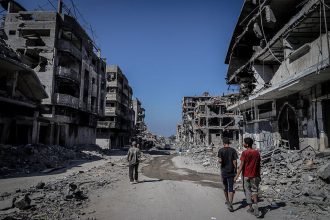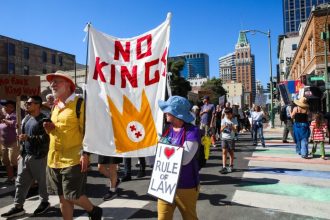At a White House event last week, a reporter asked Donald Trump whether he planned to designate antifa as a domestic terror organization. “It’s something I would do, yeah,” the president responded, adding, “Antifa is terrible.”
The Republican announced soon after that he’d follow through on this, and this week, he did, in fact, sign an executive order along these lines. NBC News reported:
Trump signed an executive order [on Monday] designating antifa, a decentralized set of extreme left-wing groups, as a ‘domestic terrorist organization.’ … A White House official said the executive order is a follow-up to a social media post last week in which Trump said antifa would be designated a terrorist organization. The official added that conversations are still happening about what steps, if any, may be taken to review the activities of organizations the administration considers left-wing.
The first serious flaw with this is that the designation doesn’t make a lot of sense: An administration can’t target a domestic terrorist organization if there is no actual organization. Antifa, to the extent that it exists, is made up of loosely affiliated anti-fascist activists. There is no budget. There is no membership list. There are no offices or headquarters. There are no staffers, leaders or board members.
At some level, Trump really ought to understand this: He announced more than five years ago that he was designating antifa as a terrorist organization, and the effort was a counterproductive bust.
The second problem is that the president is trying to use a power he does not have. As The Washington Post noted, “The United States has no legal mechanism for labeling domestic organizations as terrorist groups.” Administrations can label nonstate adversaries overseas as “foreign terrorist organizations,” but there is no domestic equivalent in U.S. law.
Given those defects, journalist and historian Garrett Graff said in response to Trump’s order, “This is a random tweet on White House letterhead. That’s all.”
And that’s certainly true as a matter of legal analysis, but there is an element to this that’s still worth taking seriously.
Arguably the biggest problem with Trump’s declaration is that it’s vague: It’s not at all clear how the White House intends to go after “antifa,” or who’ll even meet the standards for affiliation.
As we discussed last week, if the White House says that antifa members are terrorists — and the White House says it will decide on its own who and what qualifies as “antifa” affiliates — this can get scary in a hurry as the administration eyes fishing expeditions into progressive donors and activists under the guise of anti-antifa investigations.
Indeed, NOTUS reported this week that the White House’s designation is “causing some groups to worry that they’ll be targeted because they publicly condemn fascism.”
Dylan Hedtler-Gaudette of the Project on Government Oversight told NOTUS, “I wouldn’t put it past them to try and contort and twist that into somehow being supportive of terrorism.”
It’s tempting to laugh at a misguided president going after a nonexistent organization, while asserting an authority he does not have — but just because this is absurd doesn’t mean it’s not dangerous.
This post updates our related earlier coverage.
This article was originally published on MSNBC.com









